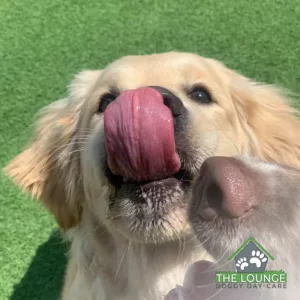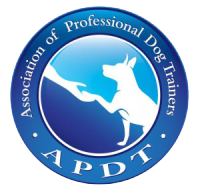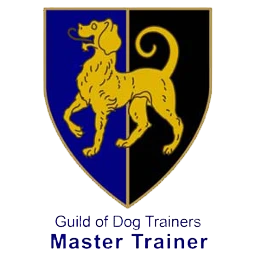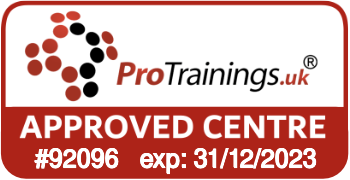You may have spoken to other dog owners out on a walk or during dog training courses about raw dog food diets for dogs and wondering if it is right for your dog. The food that your dog eats is so important to their overall health and energy levels but some dog owners and experts swear by the raw diet, whereas others have serious reservations.
If you are considering a raw diet for your pet, we’re here to answer some of your questions.
What Is A Raw Dog Food Diet?
All canned dog food is cooked, but a raw food diet is just that – raw. However, there is more to a raw food diet than simply giving your dog a bowl of uncooked mince. A raw food diet has to be balanced, just like any other dog food, to ensure your dog gets the nutrition it needs. There are 37 essential nutrients required for a happy, healthy dog, including trace elements like zinc and iron, and important building blocks like calcium and phosphorous.
A raw food diet is usually provided by subscription to a supplier who will send regular supplies of natural, real ingredients including vegetables and meat (including offal) and dairy. Vets sometimes do not endorse homemade raw food diets, as it is difficult to include all the necessary nutrients for a balanced diet.
Sometimes, raw food diets are referred to as a BARF (Biologically Appropriate Raw Food) diet. A portion of BARF dog food contains just 50% meat, with the rest made up of fruits, vegetables, eggs, cheese and other ingredients such as cod liver oil and salt.
Where Does The Raw Dog Food Diet Originate From?
The idea of feeding dogs a raw food diet is both ancient and very modern. Long before the first canned dog food, Ken-L-Ration, was launched by Chappel brothers in 1922, scraps from the kitchen and the table were all that dogs ever ate. Yet the current trend towards a raw food diet only started in 1993, when Australian vet, Ian Billinghurst, first proposed the BARF diet (standing for either Bones And Raw Food, or Biologically Appropriate Raw Food) following research on racing greyhounds and sled dogs who thrived on raw ingredients.
What Are Raw Dog Food Alternatives?
If you are not giving your dog a raw food diet, your dog will likely be eating dried food (called kibble in the US) or tinned food. Any pet food sold in the UK is subject to legislation from the Food And Standards Agency (FSA) which ensures that the food is balanced and suitable for your pet.
Benefits Of Raw Dog Food
Many advocates of the raw dog food diet claims that this particular diet can give your dogs:
- Shinier coat
- Healthier skin
- Better Dental Health
- Higher energy levels
- Fewer digestion problems
- Better breath
- Improved immune system resulting in getting ill less frequently
- Typically, includes fewer carbohydrates, meaning easier weight management
However, this is only half of the story, of course, a dog’s health can also be vastly improved by regular exercise or a dog training class.
Negatives Of Raw Dog Food
The American Kennel Club (AKC) discourage dog owners from feeding dogs raw or unprocessed meat, eggs and milk. Raw meat and dairy can carry pathogens like E. coli, listeria and salmonella. These pathogens can make pets and people sick or even cause death.
One study found E. coli in 59.6% of raw dog food samples tested. This not only puts your dog’s health at risk, but also your own, as bacteria can easily be shed with faeces. It should be noted that the same study also showed bacteria were present in some of the canned food samples tested, though not to the same extent.
Opponents of raw food diets say that they rarely have the correct balance of nutrients that are found in canned foods. Although there are set European standards, much of the raw dog food market remains unregulated, while canned pet foods are much more carefully controlled. For the raw dog food diet, you also have to be aware of the following:
- Raw dog food is more expensive, and you often have to sign on to a subscription service. The cost is based on the size of the dog, so can vary from around £1 to £4 per day
- It is not suitable for young puppies or dogs with poor health
- Hygiene is very important when preparing and handling a raw diet, especially for those who have children or the elderly in their home
Sourcing Raw Dog Food
Feeding a balanced raw food diet to your dog is not as simple as it sounds, and can be almost impossible to do if you make it yourself. Include too little calcium and you risk bone deformity and growth problems. Include too much of certain vitamins and they can build up to toxic levels. To be sure of a balanced diet, you need to buy from a producer that is registered with the Pet Food Manufacturers Association and complies with the same strict EU nutrient profiles that apply to canned dog foods. Unfortunately, very few of the current suppliers on the market are.
What About Food For Dogs At Daycare Or Training?
If your dog is lucky enough to attend daycare or dog training classes, these dogs will not normally be fed during the working day or session. If your dog has special dietary requirements, these can usually be accommodated, but please let us know in advance. The dogs may be offered treats during the day.
The PDSA charity has a good, balanced article on the raw food diet. If you’d like any further information, you could also speak with one of our dog training experts.
Conclusion
Feeding your dog a raw food diet may seem the natural thing to do, but it takes a lot of hard work to get it right. If you are prepared to invest the time, and considerable expense, to do it properly, there can be many benefits. However, if you don’t get it exactly right, there are also many risks to both your dog and to yourself. Raw feeding is not something to be considered lightly, and you should thoroughly research the subject before you make your choice.




